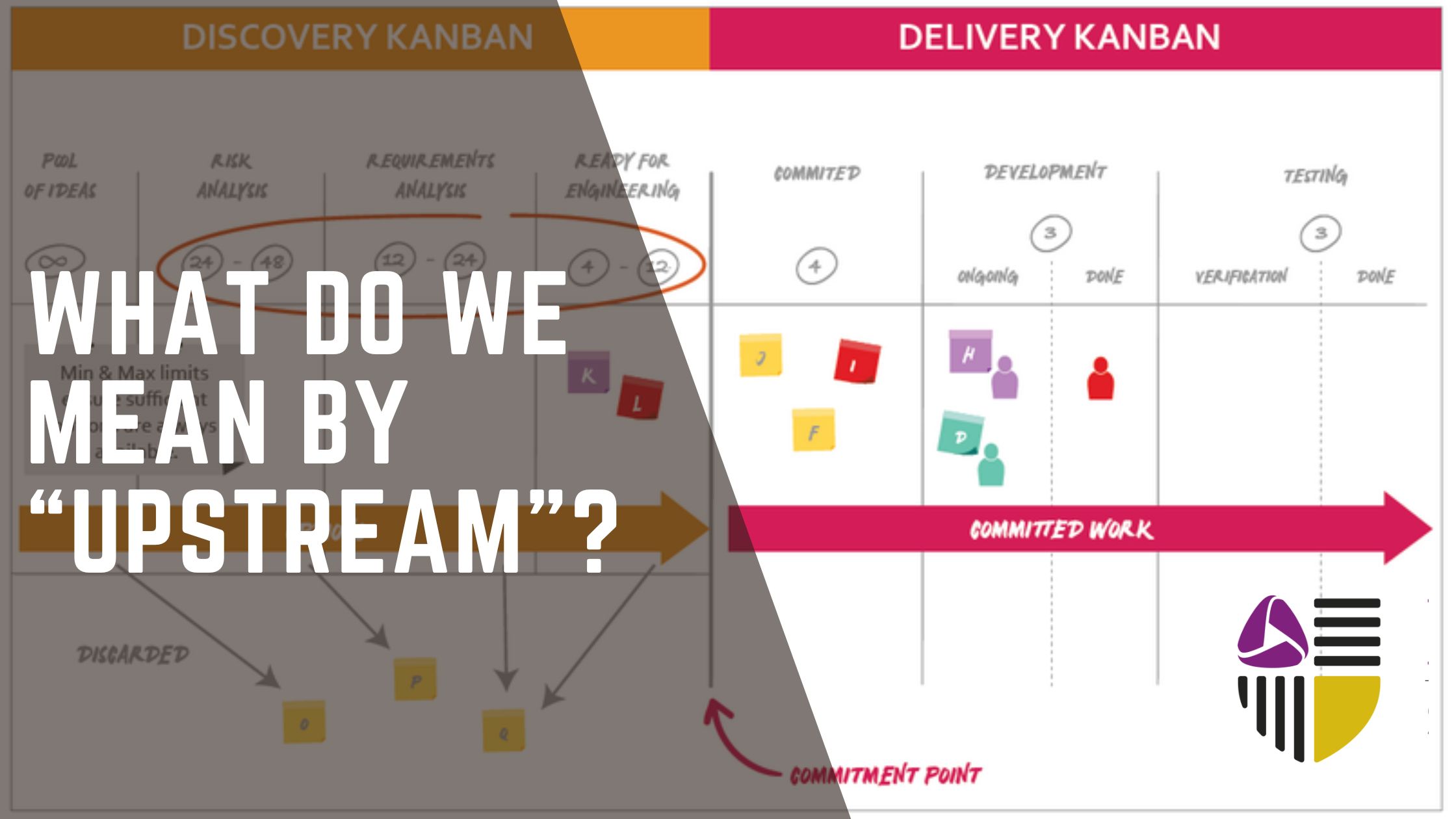What Do We Mean by “Upstream Kanban”?
Kanban aims to balance demand and capability to deliver. When you typically think of Kanban, you might think of managing tasks once they’ve entered the development pipeline. However, Upstream Kanban takes a proactive approach by addressing activities that occur before commitment. But what exactly do we mean by “upstream”?

Understanding the Upstream
Upstream Kanban refers to the filtering of ideas and options before making a commitment. It allows teams to expand their Kanban application to the discovery process, refining and selecting the best options for maximal value. The ultimate goal of the upstream process is to reach a “go or no-go” decision, determining whether to proceed with the selected options or not.
Benefits of Upstream Kanban
- Refining Work: Developing upstream steps and policies refines work, and teams may discard tasks along the way. This approach ensures that teams pursue only the most valuable options, resulting in more focused and efficient delivery.
- Visualization: Upstream Kanban boards enable teams to visualize the process of filtering and selecting options. This visual representation helps in tracking the progress of each option and identifying any bottlenecks or delays in the upstream workflow.
- Triage Discipline: Applying triage discipline in the upstream process helps in avoiding overburdening by providing prioritization and sequencing criteria. Tools such as Triage Tables posters can assist teams in effectively managing and prioritizing options.
- Confident Decision Making: Additional upstream policies empower teams to confidently make decisions, particularly in questions such as “should we invest in this?” These policies provide a framework for evaluating and selecting options based on their value and alignment with organizational goals.
Key Concepts in the Upstream
- Commitment Point: This is the stage at which we make the decision to start activities to deliver a work item. Before reaching this point, work is done to support the decision-making process, ensuring that we only pursue viable options.
- Options: Prior to the commitment point, teams deal with various ideas, requirements, or needs from customers. We refer to these as options. We manage options in the upstream part of the Kanban system by vetting them and constraining them against available capacity and urgency.
In conclusion, Upstream Kanban offers a proactive approach to managing the discovery and selection process before committing to work items. By refining options and making confident decisions, teams can streamline their workflows, focus on high-value requests, and ultimately deliver better outcomes. Embracing Upstream Kanban can lead to increased efficiency, improved decision-making, and enhanced customer satisfaction.
Start Enjoying the Benefits of Upstream Kanban!
Join us for Kanban for Design and Innovation training! This course teaches you how to design your own Upstream Kanban system and begins to teach you the practices and metrics for success.




